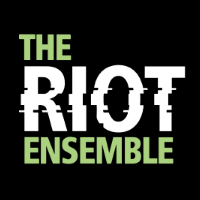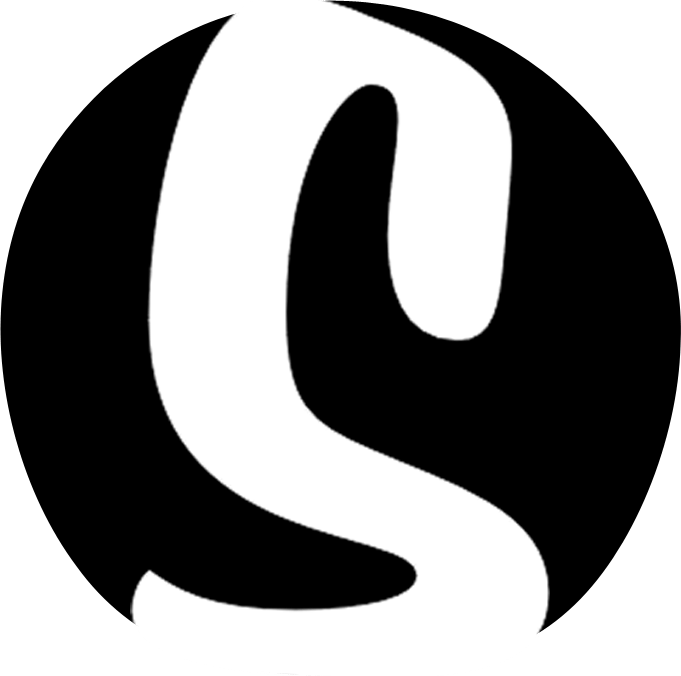A few moments with Evan Johnson
 The music of American composer Evan Johnson has been described as “conjuring a Beckett-like eloquence from stammers and silences” (Ivan Hewitt, The Telegraph). He’s a truly international composer, with works performed regularly by ensembles such as MusikFabrik, Elision, and EXAUDI at festivals ranging from Darmstadt to Spitalfields to Dark Music Days in Iceland.
The music of American composer Evan Johnson has been described as “conjuring a Beckett-like eloquence from stammers and silences” (Ivan Hewitt, The Telegraph). He’s a truly international composer, with works performed regularly by ensembles such as MusikFabrik, Elision, and EXAUDI at festivals ranging from Darmstadt to Spitalfields to Dark Music Days in Iceland.
Even with such an array of performances, I have to admit I didn’t know anything about Evan’s music until a number of our musicians started bringing it up and clamouring for us to perform it. As I’ve learned and listened more, I can only say I’ve come to admire Evan, his music, and his approach to music making very much. I’m proud and excited that we’re giving the UK premiere of L’Art de toucher le clavecin, 3 this Friday, and it was great to have some time to ask Evan a few questions in advance.
Aaron Holloway-Nahum: Thank you for taking this time with us, Evan! This Friday (April 29th) we perform L’art de toucher le clavecin, 3, one piece in a sequence of your works related to Francois Couperin’s instructional pamphlet of the same name. Could you tell us a bit about these pieces and how they relate to Couperin’s guide?
Evan Johnson: Yes, there’s this piece — “L’art de toucher le clavecin, 3” for piccolo with violin and percussion — and a duo for piccolo with violin, “L’art de toucher le clavecin, 2.” There is in theory a piccolo solo called “L’art de toucher le clavecin, 1”, but it exists only as an entry on the list of projects I need to get around to one of these days.
The duo was written first, in 2009; this trio is based on the same material, expanded, elaborated upon, spread out, sometimes just with relatively empty spaces interposed.
But why Couperin? I’ve been interested for a long time in the keyboard music of the French Baroque, as well as of more or less contemporary keyboardist-composers in other countries like Johann Jakob Froberger and Matthias Weckmann. The interesting thing about this repertoire for me is how what we normally think of as musical material — harmonies, rhythms, melodies, sectional forms… — is often just a pretext; it’s just scaffolding. The music is actually in the ornaments, the elaborations, the glimpses of other worlds that emerge semi-spontaneously out of the cracks in the edifice of the written music.
So I chose the title “L’art de toucher le clavecin” for these pieces as a general homage to this way of treating material—this reliance on ornament is, of course, a foundation of “the art of playing the harpsichord,” since it acts as a compensatory mechanism for the instrument’s inability to sustain. One of the things that Couperin’s pamphlet does, among explanations of symbols and suggested fingerings for scales and so forth, is propose a small theory of ornament along these lines.
My work in general, and these pieces in particular, work the same way: the basic “material” in the pitches-and-rhythms sense is quite simple, but it never really appears as such; instead, it’s continually buried under overlapping layers of elaboration, ornament, commentary and marginalia. The piccolo is the carrier of the basic melody, which itself is based on a very simple descending diatonic pattern, but already within that part it is elaborated beyond all recognition, and the two other instruments serve as further concentric refracting layers. It is, I think, a fundamentally baroque, and maybe even fundamentally “clavecinistic,” conception of what musical material is.
AHN: Looking at the first page of this piece, it’s quickly clear that one of the challenges for the performers on the surface of the music is the notation, which includes my purposeful ambiguities inside of very precise and detailed instructions. Is this challenge a part of the music and theatre of the piece? Or is it just a necessary step in creating a particular sound world?
EJ: It has nothing to do with a sound world, really; a lot of things I’m trying to do as a composer are related to sound only indirectly if at all. I often say that my medium isn’t sound. The performers’ medium is sound; my medium is notation. I try to use that medium to the limit of its capabilities—not necessarily just to represent sound or sounding actions, per se, at least not in a direct and unambiguous fashion, but as a semi-opaque code that generates situations for the performers to inhabit and navigate.
That means a lot of things for me, but one thing it means is that there are a lot of ambiguities in my notation, quite intentionally; a lot of little contradictions, impossible specificities and vague symbols. Everything works, though, more or less, within the domain of a recognizably standard symbology. These aren’t graphic scores, and they aren’t stimuli to improvisation or a more broadly spontaneous response.
I’m not sure it’s “theatre” per se because relatively little of all this makes its way to the audience. What one hears in my work is kind of like a shadow, or an afterimage, or a watercolor reproduction of a photograph that you can’t see. This happens in a less extreme fashion in this piece than in quite a few others of mine, maybe; I’m thinking in particular of a cello solo premiered by Séverine Ballon just last week, “dozens of canons: Anaïs Faivre Haumonté,” which is an extremely detailed and intricately worked-out piece which teeters almost exclusively, in both controlled and uncontrollable fashions, between the verge of inaudibility and actual silence. But the tendency is still there in “L’art 3” as well. This is one of several ways that experiencing my work from the audience is less like hearing and more like overhearing.
[soundcloud url=”https://api.soundcloud.com/tracks/131642768″ params=”color=ff5500&auto_play=false&hide_related=false&show_comments=true&show_user=true&show_reposts=false” width=”100%” height=”166″ iframe=”true” /]
AHN: Composers are surrounded – both in everyday life and more and more in our generation’s repertoire – by sounds and noise. You say that your medium is notation and not sound, but do ‘noises’ such as these influence you and/or get incorporated into your compositional work?
EJ: No. Not even slightly, and I don’t think even subconsciously! For me, sound is an emergent property of notation, of instrumental technique, of certain physical states of the performer and her instrument, of pitch structures, and so forth.
In particular, there are relatively few “extended techniques” in my work, in the sense of doing things with instruments that go against their normal usage in a gross, large-scale fashion meant to elicit new and interesting sounds out of an unwilling apparatus. Technique is stretched here, certain things are pushed to their limits, but that’s usually in the service of *effacing* sound, of making things unstable and withdrawn, and they are usually quite subtle, often not necessarily noticeable to the audience as such.
I really don’t think my music has much of anything to do with the world around us; certainly not on a sonic level. It’s music about instruments, about performance, about formal and constructive thinking, about musculature and its restraint, often about historical musics (like Couperin!), and in some sense about the concert ritual, but that’s about it. I think that’s enough.
AHN: In terms of performances, this will be the UK premiere of this piece, but you’ve had many performances of other pieces in the UK and, indeed, all over the world. Do you find different approaches to your music (and music-making in general) in different places?
EJ: This is actually the first performance of the piece since its premiere in 2012!
The line when I was first starting out as a more or less full-time composer, a little over a decade ago in graduate school, was that performers in the US (and in the UK, for that matter) tended to be risk-averse, resistant to challenges and unusual playing techniques, and liable to dismiss music that trafficked in them, compared to their colleagues on the Continent. That may have been true at one point; I did have an experienced American violinist tell me once in frustration that the major-third artificial harmonic didn’t exist.
But, as it happens, I’ve had barely any contact with “established” ensembles in the US. And while my experiences with that generation of musicians and ensembles in Europe and elsewhere (including ensemble mosaik, who premiered this piece) has been uniformly positive. A lot of the performers of my work have been—like your ensemble—younger, less established, but no less fiercely talented.
I can’t speak, naturally, to what the environment “on the ground” was like for a composer of “difficult” music (in whatever modality) twenty or thirty years ago, but it seems to me that there is an extraordinary flowering going on right now of performers my age and younger who are utterly fearless, enthusiastic about trying things that don’t make sense right away, full of a totally insane energy, willing to fail, and actively looking to push boundaries and discover new territories. I’ve found this to be true everywhere: on the Continent, in the UK, and even (!) in the US, where it seems like young soloists and groups made up of players in their twenties are popping up every other day and presenting truly groundbreaking experimental repertoire. If there were national differences in temperament or inclination, time has erased them, at least on the level of the soloist and chamber ensemble. (Orchestras may well be a different story; I don’t have any insider experience with that.) And of course, one major difference these days is that in the age of social media it doesn’t take more than a small and devoted cadre of people to form an exciting and influential community.
[soundcloud url=”https://api.soundcloud.com/tracks/187158454″ params=”color=ff5500&auto_play=false&hide_related=false&show_comments=true&show_user=true&show_reposts=false” width=”100%” height=”166″ iframe=”true” /]
AHN: Well it’s our pleasure to be counted among that growing community of performers and believers in your work, Evan. I hope this will be the first of many collaborations between us! Just before we go, tell us a bit about what other projects you’re working on at the moment?
EJ: I’m working as we speak on a couple of rather unusual solos. One is a set of spare, tiny miniatures for tuba, which will be premiered by the Berlin-based tubist Jack Adler-McKean at the Darmstadt Summer Courses. The other, which is actually quite relevant to the “L’art de toucher” series, is for Karin Hellqvist, the original violinist of “L’art 2”. In a 2010 studio recording, Karin played her part of “L’art 2” on a baroque bow, completely on her own initiative, to extremely nice effect. I didn’t find out about that until years later, actually, when the other performer (the flutist Richard Craig) let it slip. I was excited to learn about this, given my musical interests; and so, when a chance arose to do a solo for her we decided immediately that it would be for a violin with gut strings and baroque bow. She’ll premiere it at the Ultima Festival in Oslo in September. After that, a biggish piece for clarinet and string trio for your outstanding colleagues to the north, the Distractfold Ensemble.
There’s also a portrait concert of my work later this year in at the great little venue Spectrum in New York, and I’ll be making my first trip to the Bludenzer Tage zeitgemäßer Musik in the Austrian Alps in November for a performance by ELISION of a twenty-plus-minute piece from 2008 for two bass clarinets called Apostrophe 1 (All communication is a form of complaint).


